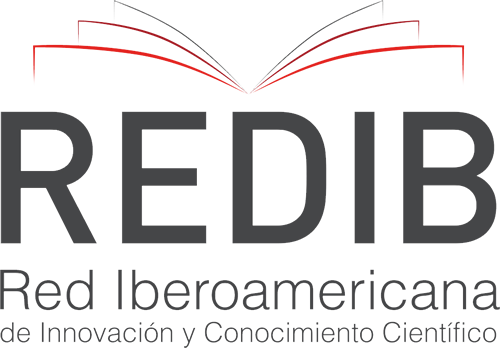Mito y catástrofe. Personajes y paisajes en Werner Herzog y el cine latinoamericano contemporáneo
DOI:
https://doi.org/10.32870/cys.v0i32.6952Palabras clave:
Cine, mito, catástrofe, cine latinoamericanoResumen
La relación entre mito y catástrofe es útil para analizar la cinematografía de Werner Herzog. Tomando como referencia esta relación, y focalizándose en el tratamiento narrativo dado a los personajes y a los paisajes, este artículo compara esta cinematografía con algunos ejemplos del cine latinoamericano contemporáneo. Se demuestra así que el cine latinoamericano que resuena con el tono de catástrofe del cine de Werner Herzog tiende más hacia la desmitificación que hacia el mito.Descargas
Citas
Benelli, D. (2014). The cosmos and its discontents. En T. Corrigan (Ed.), The films of Werner Herzog. Between mirage and history (pp. 89-104). New York: Routledge.
Benjamin, W. (2002). Charles Baudelaire (trad. J. Lacoste). Paris: Payot.
Carré, V. (2008). La quête anthropologique de Werner Herzog: documentaires et fictions en regard. Strasbourg: Presses universitaires de Strasbourg.
Coates (2003). Cinema, religion and the romantic legacy. Alderschot: Routlege.
Corro, P. (2012). Retóricas del cine chileno. Ensayos con el realismo. Santiago: Curato propio.
Cronin, P. (2012). Werner Herzog: a guide for the perplexed. London: Faber and faber.
Dufays, S. (2014). El niño en el cine argentino de la postdictadura 1983-2008: alegoría y nostalgia. Woodbridge:Tamesis.
Epplin, C. (2012). Sacrifice and recognition in Carlos Reygadas's Japón. Estudios Mexicanos, 28(2), 287-305. DOI: 10.1525/msem.2012.28.2.287
Flanagan, M. (2008). Towards an aesthetic of slow in contemporary cinema. 16:9, 6(29). Recuperado de: http://www.16-9.dk/2008-11/side11_inenglish.htm
Gabrea, R. (1986). Werner Herzog et la mystique rhénane. Lausanne: L'age d'homme.
Gerstenkorn, J. (1995). La métaphore au cinema: les figures d’analogie dans les films de fiction. Paris: Méridiens Klincksieck.
Jaffe, I. (2014). Slow movies: countering the cinema of action. New York: Wallflower.
Kant, E. (2000). Observations sur le sentiment du beau et du sublime (Trad. R. Kempf). Paris: Flammarion.
Koch, G. (2014). Blindness as insight: visions of the unseen in Life of silence and darkness. En T. Corrigan (Ed.), The films of Werner Herzog. Between mirage and history, (pp. 67-88). New York: Routledge.
Lefebvre, M. (2006). Landscape and Film. New York: Routledge.
Luca, T., & Barrada, N. (2016). Slow cinema. Edinburgh: Edinburgh University Press.
Mélon, M.-E. (1998). Gribiche ou la leçon de choses. Note pour une théorie de l’allégorie au cinema. 1985. Revue de l’Association française de recherches sur l’histoire du cinema. [No. especial “Jacques Feyder”], 73-98.
Page, J., & Sánchez, I. (2012). Temporalities in latin american film. Arizona journal of hispanic cultural studies, 16, 203-210. DOI: 10.1353/hcs.2012.0014
Prager, B. (2010). Landscape of the mind: the indifferent earth in Werner Herzog’s films. En G. Harper (Ed.), Cinema and Landscape, (pp. 89-101). Bristol: Intellect.
Prager, B. (2011). The cinema of Werner Herzog: aesthetic ecstasy and truth. Londres/Nueva York: Wallflower Press.
Rodelo, A. (1 de agosto de 2016). Entrevista con Ciro Guerra. La patria. Recuperado de http://www.lapatria.com/node/198725.
Romero, M. (20 de abril de 2003). Japón se llama así porque quise evocar al sol naciente. La Jornada. Recuperado de http://www.jornada.unam.mx/2003/04/20/06an1esp.php?printver=0
Rowlandson, W. (2006). The journey into the Text: reading Rulfo in Carlos Reygadas's 2002 feature film Japón. The modern language review, 101(4), 1025-1034. DOI: 10.2307/20467026.
Schroeder, P. (2016). Latin-american cinema, a comparative history. Okland: University of California.
Walter, F. (2008). Catastrophes. Une histoire culturelle, XVIe-XXIe siècle. Paris: Le Seuil.
Filmografía
Buye, M. (Productor), & Alonso, L. (Director). (2014). Jauja [Película]. Argentina, Estados Unidos, Francia Dinamarca, México, Holanda: 4L, Fortuna films, Kamoli Films, Perceval Pictures, Mantarraya, Les films de Worso, The Match Factory, Massive.
Chavarrías, A. et al. (Productor), & Llosa, C. (Director). (2008). La teta asustada [Película]. España, Perú: Oberón Cinematográfica, ICIC.
Ciuffo, A., & Nelson, E. (Productor), & Herzog, W. (Director). (2010). Cave of forgotten dreams [Película]. Alemania, Canadá, Estados Unidos, Reino Unido: Creative differences, History Films, Arte, Werner Herzog Filmproduktion.
Corredor, J. D. (Productor), & Guerra, C. (Director). (2015). El abrazo de la serpiente [Película]. Colombia, Venezuela, Argentina: Ciudad lunar.
Herzog, R. (Productor), & Herzog, W. (Director). (2006). El diamante blanco/The white diamond. Alemania, Japón, Reino Unido: Marco Polo Film, NDR, NHK.
Herzog, W. (Productor), & Herzog, W. (Director). (1971). Fata morgana [Película]. República Federal de Alemania: Werner Herzog Filmproduktion.
Herzog, W. (Productor), & Herzog, W. (Director). (1970). También los enanos comenzaron pequeños/Auch Zwerge haben klein angefangen [Película]. República Federal de Alemania: Werner Herzog Filmproduktion.
Herzog, W. (Productor), & Herzog, W. (Director). (1972). Aguirre o la cólera de Dios/Aguirre, der Zorn Gottes [Película]. República Federal de Alemania: Werner Herzog Filmproduktion.
Herzog, W. (Productor), & Herzog, W. (Director). (1974). El enigma de Kaspar Hauser/Jeder für sich, und Gott gegen alle [Película]. República Federal de Alemania: Werner Herzog Filmproduktion.
Herzog, W. (Productor), & Herzog, W. (Director). (1976). Corazón de cristal/ Herz aus Glas [Película]. República Federal de Alemania: Werner Herzog Filmproduktion.
Herzog, W. (Productor), & Herzog, W. (Director). (1977). La soufrière [Cortometraje]. República Federal de Alemania: Werner Herzog Filmproduktion.
Herzog, W. (Productor), & Herzog, W. (Director). (1977). Stroszek [Película]. República Federal de Alemania: Werner Herzog Filmproduktion.
Herzog, W. (Productor), & Herzog, W. (Director). (1985). The dark glow of the mountains/Gasherbrum [Película]. Alemania: Werner Herzog Filmproduktion, Süddeutscher Rundfunk.
Herzog, W. (Productor), & Herzog, W. (Director). (1984). Donde sueñan las verdes hormigas/Wo die grünene Ameisen träumen [Película]. República Federal de Alemania, Australia: Werner Herzog Filmproduktion, Pro-ject Filmproduktion.
Herzog, W. (Productor). Herzog, W. (Director). Fitzcarraldo [Película]. República Federal de Alemania, Perú: Werner Herzog Filmproduktion, Wildlife Peru.
Herzog, W. et al. (Productor), & Herzog, W. (Director). (1990). Ecos de un reino siniestro/Echoes from a sombre empire- Bokassa [Película]. Alemania, Francia: Films sans frontières, Sara filmproduktion, Werner Herzog Filmproduktion.
Herzog, W. et al. (Productor), & Herzog, W. (Director). (1991). Lessons of darkness/Lektionen in Finsternis [Película]. Francia, Reino Unido, Alemania: Canal +, Première, Werner Herzog Filmproduktion.
Herzog, W. et al. (Productor), & Herzog, W. (Director). (2000). Alas de esperanza/Julianes sturz in den Dschungel [Película]. Alemania, Reino Unido: BBC, Werner Herzog Filmproduktion.
Herzog, W. et al. (Productor), & Herzog, W. (Director). (2005). The wild blue yonder [Película]. Alemania, Francia, Reino Unido, Austria: Werner Herzog Filmproduktion, BBC, France 2, West Park Pictures Filmproduktion.
Larraín, J. (Productor), & Larraín, P. (2008). Tony Manero [Película]. Chile, Brasil: Fábula, Latina Estudio Prodigital.
Reygadas, C. (Productor), & Reygadas, C. (Director). (2002). Japón [Película]. Alemania, Holanda, España, México: No dream cinema, Mantarraya, HBF, Solaris Films, IMCINE.
Rosselot, V. (Productor), & Guzmán, P. (Director). (2016). El botón de nácar [Película]. Francia, España, Chile, Suiza: Atacama, Valdifica films.
Scenna, L. (Productor), & Agüero, P. (Director). (2008). Salamandra [Película]. Argentina, Alemania, Francia: JBA-Rohfilm
Singer, A., & Stipetic, L. (Productor), & Herzog, W. (Director). (2016). Into the inferno [Película]. Alemania, Canada, Reino Unido : Matter of fact media, Spring films, Werner Herzog Filmproduktion.

Descargas
Publicado
Cómo citar
Número
Sección
Licencia
Los autores/as que publiquen en esta revista aceptan las siguientes condiciones:
De acuerdo con la legislación de derechos de autor, los autores conservan los derechos de autoría y otorgan a Comunicación y Sociedad el derecho de primera comunicación pública de la obra. Comunicación y Sociedad no realiza cargos a los autores por enviar y procesar artículos para su publicación.
Los autores/as pueden realizar otros acuerdos contractuales independientes y adicionales para la distribución no exclusiva de la versión del artículo publicado en Comunicación y Sociedad (por ejemplo incluirlo en un repositorio institucional o publicarlo en un libro) siempre que indiquen claramente que el trabajo se publicó por primera vez en Comunicación y Sociedad.










